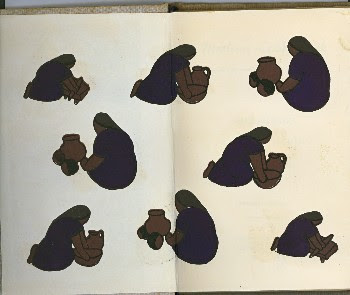Sugar skulls are a form of sweet, that are left at both altars and gravestones on
dia de los muertos. They are traditionally decorated with very bright and colourful adornments. These can range from edible sugars and sweets to non edible feathers, sequins and beads. In more recent years they have started to die out in numbers and instead chocolate alternatives are becoming more popular. There is really only one way to prepare the initial skull canvas, but after that there are literally hundreds of different ways to decorate. Below is a detailed step by step guide to making the skulls, with accompanying pictures for each step. Firstly you will need:
- Granulated Sugar (approximately 1 cup per 6 small sugar skulls, 4 medium or 1 large)
- Large bowl
- Water
- Sugar Skull molds (shape and size of your preference)
- Meringue powder, 1 teaspoon for each cup of sugar.
- Powdered sugar for the sugar skull decorative icing.
- Paste food coloring to color the icing.
- Icing decorator bags
- A large, dry area for the sugar skulls to dry in.
- Any other decoration you like such as foil, beads or feathers.
One: For every cup of sugar, mix in 1 teaspoon of meringue powder and sprinkle 1 teaspoon of water on top. Work the water into the sugar with your fingers until the mixture feels like cool beach sand. This takes a few minutes, so be patient. The sugar is ready when you can press your finger or thumb into it and the print will stay.
Two: Fill the mold with sugar and press firmly with the palm of your hand. When the skull is full and pressed into mold, use the back of a knife to scrape off excess sugar and flatten back. Lightly re-press the scraped surface to smooth it.
Three: Place a piece of cardboard or flat plate over the sugar skull. Hold the skull on the plate tightly and flip it over. Set the plate down and carefully remove the mold. Let the skulls dry for 12-24 hours.
Four: In a large mixer, mix 2/3 cup water, 1/2 cup meringue powder and 2 pounds of powdered sugar until icing peaks or about 9 minutes. Separate the icing into smaller portions (disposable cups and popsicle sticks work well for this) and use the paste food coloring to color the icing. Place the icing in the icing decorator bags. Snip the end of each bag when you're ready to decorate. Start very small with the snip, you can make it bigger if necessary.
Five: Use your icing to decorate the skulls. If you're adding foil, beads or feathers, use the icing as a glue to attach them. If you add non-edible items to the skull, do not attempt to eat it!
Note- If you have any larger 2-piece skulls, use the icing to "glue" the pieces together.


















































